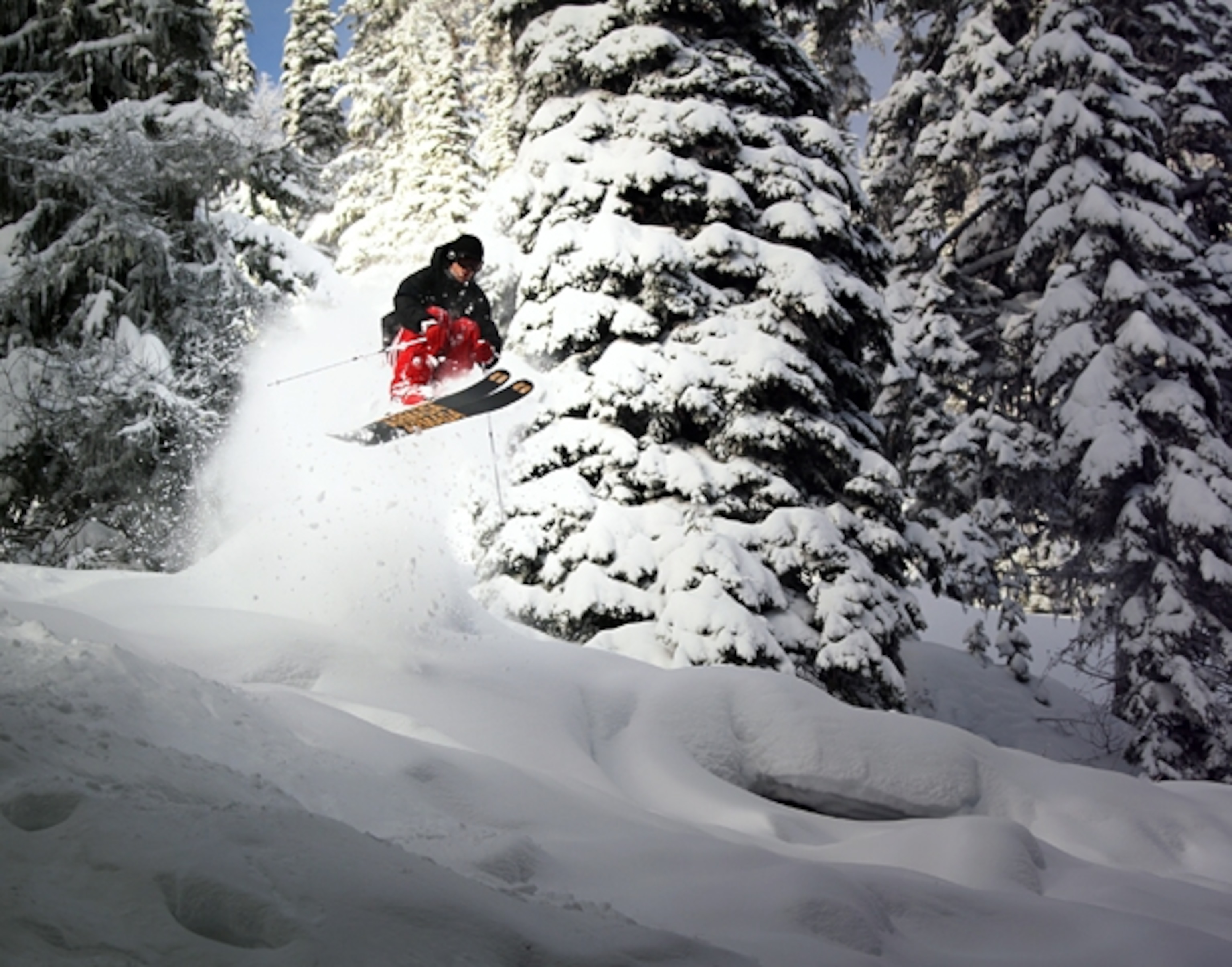
Do You Have to Free Your Mind to Free Your Heel?
I’d put myself in the fairly adventurous category, but when it comes to backcountry skiing, I’ve never really given it a fair shake—despite having many “pinhead” friends who‘ve been trying to convert me for years. This perplexes me. Why the heck am I not ripping up untracked pow pow in the backcountry? By all measure, I should really dig it. I love exploring the woods. Even more, I love getting away from crowds. The thought of skinning up a remote mountain, then making sick powder turns all days sounds amazing.
Maybe it’s just that I never had a proper introduction. I took an avalanche safety class a while back, and it was enough to scare me straight. Colorado snowpack is notoriously unstable—we have more annual avalanche deaths than any other state. I learned that many slopes with tantalizing, steep, powdery pitches may be unsafe. I was a bit overwhelmed by how much there is to know, and how hard it is to learn to interpret snow layers.
Then there’s the equipment. I bought a pair of telemark skis back then (without getting advice) and took a couple of lessons. I sucked. And I didn’t like sucking. After honing my alpine turns for 20 some odd years, it was tough to go back to being a beginner. Of course, those tele skis were pretty darn skinny. And I bought leather boots that wore holes in my feet. Putting on the skins was awkward. I had never heard of AT bindings that allow you to lock down and make alpine turns on the descent.
I guess I needed someone to tell me a thing or two. It’s not always easy to take up a new sport, especially when there’s life or death at stake. And if you’re a girl surrounded by a bunch of back-slapping guys when you’re trying to learn, well—that can be a bit of turnoff, too.
But all hope is not lost, as I learned from my coworker I Ling, our VP of communications here at Outdoor Industry Association. She’s a southern girl who’s new to the whole snow sports thing, having spent just one winter here so far. She’s no wimp, mind you. She’ll leave plenty of guys in the dust on her mountain bike. But even for a hard-charger like her, skiing was a bit intimidating—as was going into the backcountry in winter.
To learn the ropes, she signed up for an all-women’s clinic—a day-and-a-half class to introduce the basics of backcountry travel and safety. It started in a classroom setting in a retail store, where women instructors worked with a small group of female students, talking about gear. They learned about different types of skis (they can be fat!) and bindings (you can lock down!). The instructors talked about clothing. And we all know, we ladies like to know what to wear. Even after 34 years of skiing, I still ask my husband what layers to use. It drives him nuts.
Then there was talk of safety. They learned about safety gear—like air bags that help you float in an avalanche, probes and beacons to help you locate someone who is buried, and shovels to dig people out. Of course, all the safety gear in the world just equates to a Hail Mary if you’re caught in a significant slide. So the instructors, who all had impressive ski patrol pedigrees, discussed snow and slopes and how to read the weather, conditions, and terrain.
The next day, the class set out for a ski tour. They skinned up a slope and skied down, discussing trip planning, how to read terrain, and what the prior weeks’ weather meant for snow conditions. They practiced using beacons. I Ling said it was amazing. She loved exploring the backcountry in winter. She enjoyed applying what she’d learned in the classroom to a practical situation. She got to test out some awesome demo gear. And she appreciated the non-intimidating all-women environment that made it easy to ask questions and express fears.
What’s different about I Ling’s experience from mine is that she came out feeling empowered, wanting to learn more, and inspired to start exploring. She knew what sort of gear she could use to have the most fun. She walked away with an exciting new world open to her to explore.
- National Geographic Expeditions
I Ling credits Backcountry Babes, the outfitter who tailors its courses to the way women learn, and the local outdoor specialty retailer, who helped explain gear and provided demo equipment. This is important. Outdoor retailers and outfitters play a critical role in introducing newcomers to outdoor sports. They act as mentors and leaders, making the outdoors accessible in a whole new way.
The moral of the story is this: No matter what your age, ability or gender, never be afraid to try something new. Is there an outdoor activity you’ve been hankering to check out? You don’t have to figure it out all on your own. Take a class. Go with a friend. Give it a shot. You might love it. You might hate. It might thrill you. It might scare you. But you’ll never know unless you try.
Now you must excuse me, because I must go sign up for a backcountry ski class and give it another whirl. It’s time for me to see what I’ve been missing all these years. Plus, it’s an excuse to get some new gear!
Avery Stonich is communications manager for Outdoor Industry Association. Follow us on twitter: @OIA and @averystonich
